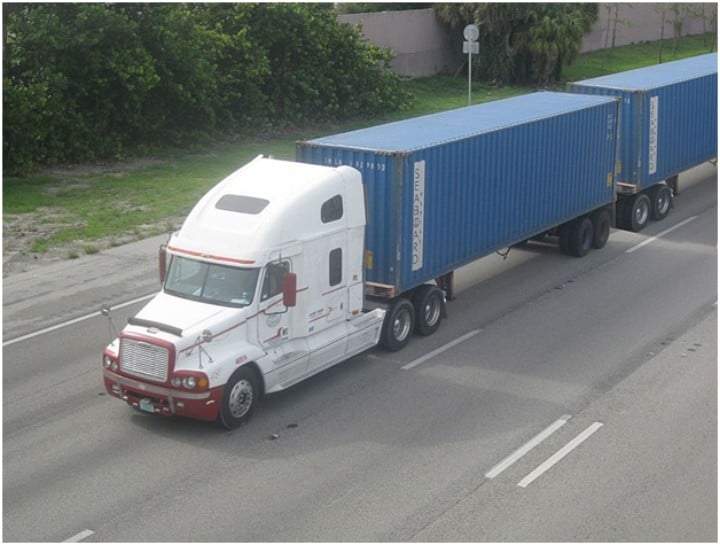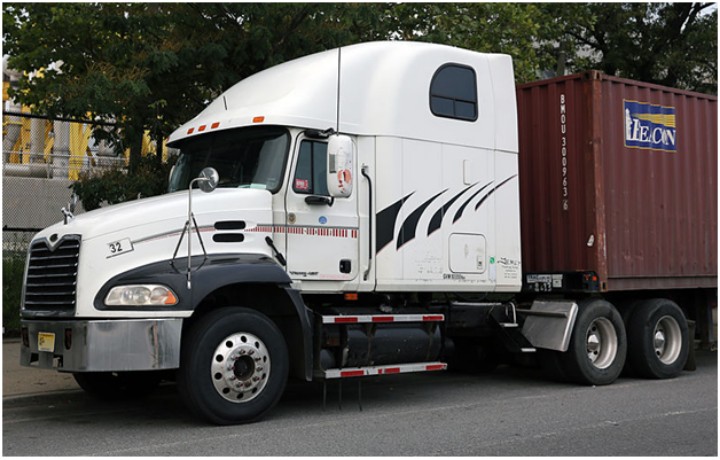Semi-trucks are considered to be the “big guys” in the transportation industry. They are mostly used to transport heavy products including produce, machines, cars, construction materials and many more. They are mostly preferred by transporters due to its reliable strength and versatility. Their engines can go for millions of miles providing jobs for drivers and a stable source of income for transportation businesses.
Semi-trucks feature trailers that are not assembled on the front part. They do not have front wheels for steering and can only function when attached to a tractor. Most semi-trailer trucks are about 53 feet long. Semi-trucks also feature automatic brake systems that are applied automatically when they are disconnected from the truck or tractor.
Driving semi-trucks also requires above average driving skills. Operating one requires specialized training to be able to efficiently drive a semi-trailer. To learn more about what a semi-trailer offers, and the opportunities available for truck drivers and semi-truck operators, you should begin with understanding the types of semi-trucks and what each type entails.
General Types of Semi Trucks
-
Day Cab Semi Trucks
To transport goods and other products, some types of semi trucks require long hours, even days, to reach each destination. In some instances, goods can be delivered in a few hours, also known as quick hauls. Loads that can be delivered through shorter routes and can be done in a single day. For these types of hauls, Day Cab Semi Trucks are the preferred semi-trucks for transport.
Day Cab Semi Trucks are smaller and feature more axles than rooms for the drivers. They do not have a sleeper cabin at the back. These types of trucks feature insulation and soundproofing, although some trucking companies skip these features to get a semi-truck at a cheaper price tag or semi-trucks for sale. They are also the most recognizable type of semi-trucks on the road. These semi-trucks are high-performance and efficient to serve the day to day business needs of a trucking company. Thus, you may want to check out a day cab for sale posting when you see one.
-
Sleeper Semi Trucks
Sleeper Semi Trucks are the opposite of day cabs. They are designed for long hauls and offer more features compared to day cabs. They feature a sleeping cabin, more room for the driver and walking spaces. Sleeper semi trucks feature a kitchen area, bathrooms and even a nice bedroom in the more plush types of sleeper trucks. They are designed this way to be able to provide comfort for truckers who transport heavy hauls for a long period of time.
Sleepers inside this type of semi truck can be small but can go as big as 96 to 168 inches. Some sleepers can also go as huge as 268 inches which boost its retail price. New trucks with a nice set of custom sleepers can cost anywhere from $200,000 to $300,000, sometimes even more. It is a good investment for owner operators, but with amenities worth the price. However, for those looking to start a transport business without a lot of budget to splurge, a used sleeper semi-truck or a smaller sleeper included in the semi truck would be a better purchase.
Different Types of Semi Trucks
Box Trucks
A box truck is a type of semi truck that features an enclosed cube-shaped cargo area. Box trucks feature a separate cargo area with the door at the back. Others feature a door between the cabin and the cargo area for easy access. It is the most popular type of semi truck that transports furniture, appliances and comes in different lengths and sizes.
Box trucks are also called cube van, cube truck, box van, and rolling toasters. They are mostly used in transporting inventory, mostly for retail stores, to protect it from the outside weather. Box trucks can also easily store cargo. It is also considered as the safest storage container available out there, and provides a secure and safe place for storing tools without the worries of items being stolen or vandalized from the haul. They can be easily maneuvered and offer better mileage compared to the other types of semi trucks.
Dry Bulk
Another type of semi truck available for transporting goods, mostly dry materials, in large quantities are dry bulk semi trucks. They are mostly used to transport large quantities of chemicals, food as well as building products. A dry bulk semi truck is also known as pneumatic trailer. It features a metal cylinder that has a series of cone-shaped hoppers and manholes at the back and the top of the tank. A valve is available at the bottom of the hopper that features a pipe that runs at the bottom of the trailer.
Most of the products in a bulk freight are not packaged, they are sold by weight or volume rather than in tangible pieces. Dry bulk semi trailers are considered to be the most robust aluminum trailers in the transportation business. Dry bulk semi trucks cost around $30,000 to $40,000. However, they can be costly to maintain to prevent concerns on contamination of the freight served by these semi-trucks.
Car Hauler
Car haulers are semi-trucks mainly used to transport passenger vehicles. They can either be open or closed and feature built-in ramps to easily load and off load vehicles. Power hydraulics are also common in car haulers. It is used to lower and raise ramps for stand alone accessibility.
Most car haulers serve manufacturers that ship new cars from the manufacturer to the dealership. They also serve second-hand markets where consumers purchase vehicles and need it delivered to their location. Car haulers are attached to the tractor via a fifth wheel coupling. A commercial car carrier in America has a capacity between 5 and 9 cars or a 80,000 lb weight cap. Typical car carrier trailers feature a double-decker design and are equipped with loaders and winches to transport new, running vehicles.
Flat Bed
A flatbed semi truck features an entirely flat body, without roofs and sides included in its general structure. It is a good choice for transporting large and heavy products that would not usually fit in a fully-closed trailer body like that of a box semi truck. It is commonly used to tow and transfer bulky commercial loads such as machinery, lumber, steel rods and large pipes. Some flat beds feature a trailer that sits close to the ground. They are known as lowboy trailers and are used to transport heavy equipment such as construction and mining machineries.
Flat beds feature a solid bed, mostly with wooden planks. Low sides are hinged down at the side of the truck for easy loading. This feature is known as the drop-side of a truck. Some flat beds feature steel upright pillars, also known as stake trucks, which are removable and used to retail the load.
You can use this guide to help you understand which niche in the trucking industry fits your business needs. Knowing the different types of semi trucks and how they are utilized can help entrepreneurs identify the best type of semi truck they need for their trucking business. Once you have decided with the type of semi truck and trailers to use for your business, you can begin your search for the most affordable yet most efficient truck possible for your budget and needs.
We hope you found this blog post on Buying Guide: Different Types of Semi Trucks Explained useful. Be sure to check out our post on How to Move to Another State for more great tips!
Have Experience in the Moving Industry? Want an Additional Income Stream? Work With All Around Moving!
Partner with us and we’ll help you make money. Click here to learn more.







